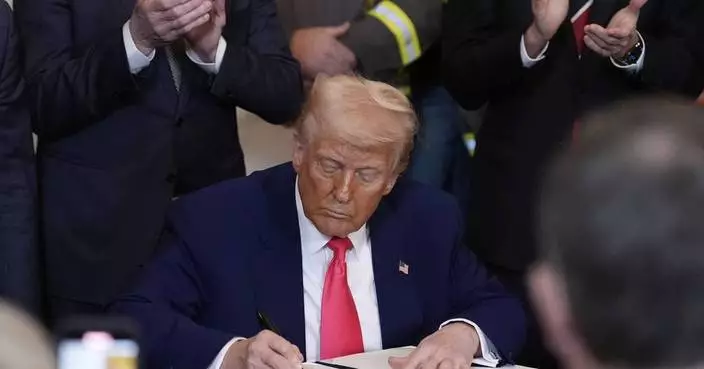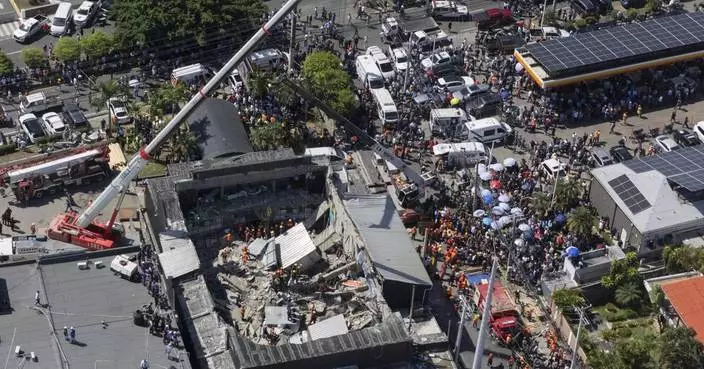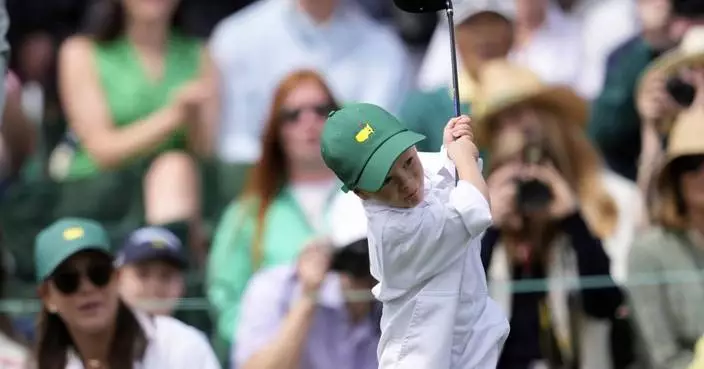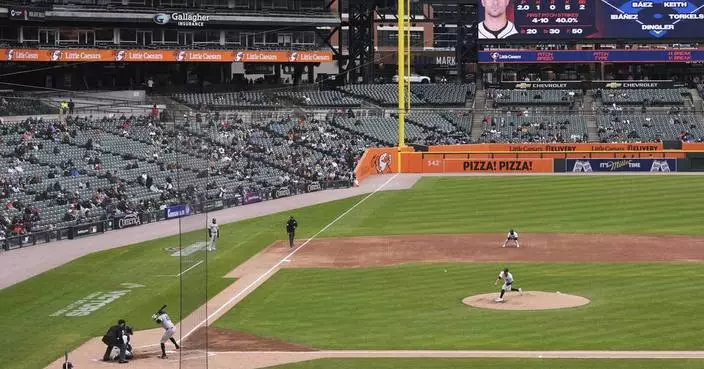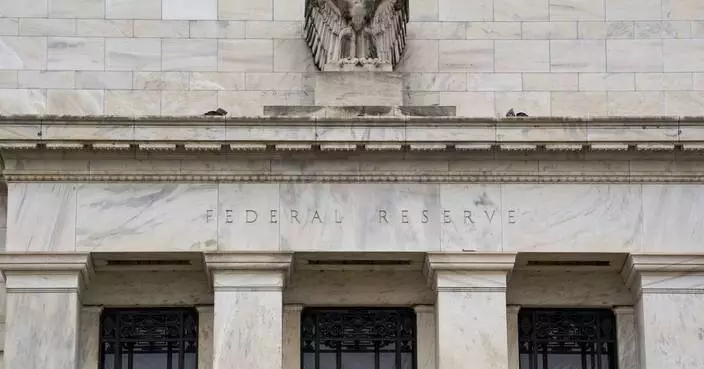WELLINGTON, New Zealand (AP) — The Hurricanes have been late to the party in Super Rugby this season.
While other teams shone in the first weeks of a tight competition, the Wellington-based Hurricanes lacked their usual luster.
But with a 57-12 win over the New South Wales Waratahs in Round 7, the Hurricanes catapulted themselves into playoffs contention, finally grabbing a place in the spotlight.
The Hurricanes had a 1-3 record through their first four games, which contained only flashes of their usually inspired attacking play.
While their set piece generally has been reliable, ball security and control of possession has not. While the Hurricanes have been able to create opportunities, they haven’t always been able to finish.
In a season in which all advantages appear to be with the team in possession, the Hurricanes have been too careless of possession. Their defense has been solid but they have been imprecise and impatient on attack.
On Friday everything clicked. The Waratahs scored first before the Hurricanes seized control and ran in nine tries.
The effort started at the back with strong defense and the outstanding ability of Hurricanes captain and open side flanker DuPlessis Kirifi to win breakdown turnovers. Kirifi is pressing a strong case for All Blacks selection this year.
Lock Isaia Walker Leawere was a standout performer and winger Kini Naholo produced the finishing touch with three tries.
The Hurricanes got back their confidence and with it their creativity in attack which was seen at its best in the reverse pass from fullback Ruben Love which created a 57th minute try for winger Ngane Punivai.
The first green shoots of the Hurricanes’ revival were seen in their 20-18 win over the Highlanders in Round 5 and two rounds later it has come into full bloom.
“It was nice rugby wasn’t it?” coach Clark Laidlaw said. “If you watched that Highlanders game, we had to work hard for everything we got, so it’s always pleasing when you get a half chance and you take it.
“If you back it up with another one quickly then you can get a bit of daylight (on the opposition).”
The Waratahs lost Max Jorgenson to injury then Joey Walton to a yellow card which also cost a penalty try. That helped the Hurricanes to take control of the match, especially when they scored twice close to halftime.
“The game is won and lost around the physical collision and the Hurricanes dominated that area,” Waratahs coach Dan McKellar said. “We turned the ball over too much, both at the breakdown and at the set piece and they got on a roll.
“They’ve got some talent in that group and they showed that tonight, so some harsh lessons for us.”
On the subject of revivals, Moana Pasifika’s magnificent 45-29 over the much higher-ranked Crusaders was another example of a team which had hinted at better form than it had produced.
Again, confidence played a key role. The Moana Pasifika players felt that they were on the verge of a complete performance and produced that on Saturday, going out with the intention of starting well, then keeping up the tempo and pressure when the Crusaders tried to rally.
Moana Pasifika’s kicking game was outstanding, implemented by flyhalf Patrick Pellegrini. Sydney-born and of Tongan heritage, Pelligrini played for Coventry in England’s RFU Championship and for Tonga at the 2023 World Cup.
All Blacks backrower Ardie Savea, who moved from the Hurricanes to Moana Pasifika between seasons, has played a major role in the team’s improvement. Savea scored two tries and Pellegrini touched down once in Saturday’s victory.
As with the Hurricanes, a strong performance in their last match — a narrow loss to the Chiefs, who led the competition after Round 6 — laid the foundation for a win in this weekend.
“We talked about moments and winning each moment," Savea said. "I felt like the boys stacked a lot of those moments together tonight.
“We knew no one was expecting us to win so the message was for the boys just to jam and play with nothing to lose.”
AP rugby: https://apnews.com/hub/rugby
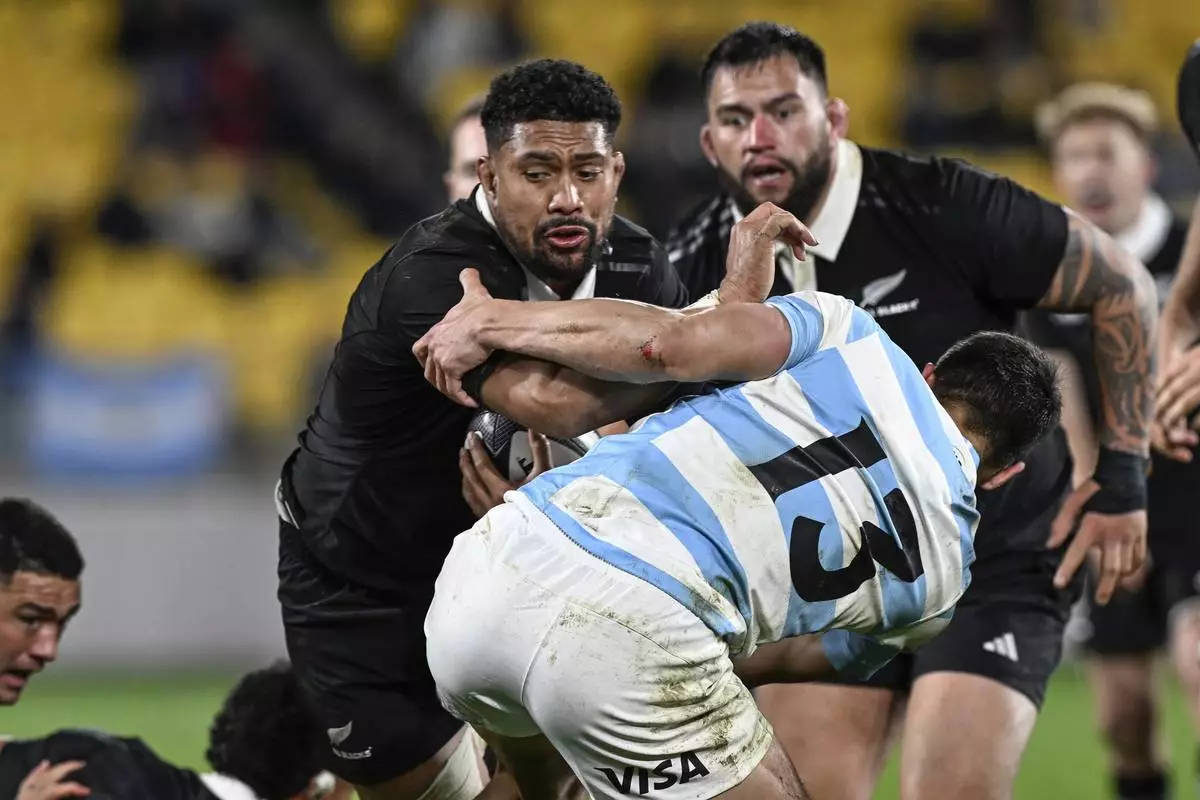
FILE - Argentina's Lucio Cinti, right, tackles New Zealand's Ardie Savea, left, during their rugby union test match in Wellington, New Zealand on Aug. 10, 2024. (Andrew Cornaga/Photosport via AP, File)
NEW YORK (AP) — U.S. stocks on Thursday are giving back some of their historic gains from the day before as Wall Street weighs a global trade war that has cooled in temperature but is still threatening the economy.
The S&P 500 was down 2.3%, a day after surging 9.5% following President Donald Trump’s decision to pause many of his tariffs worldwide. The Dow Jones Industrial Average was down 700 points, or 1.7%, as of 9:35 a.m. Eastern time, and the Nasdaq composite was 2.7% lower.
Even a better-than-expected report on inflation Thursday morning wasn’t enough to get U.S. stocks to add to their surges from the day before, including the S&P 500’s third-best since 1940. Economists said the data wasn’t useful because it offered a view only of the past, when inflation may rise in coming months because of tariffs. A better-than-expected report on joblessness didn’t help much either, with Wall Street’s focus entirely on what’s to come.
“Trump blinks,” UBS strategist Bhanu Baweja said about the president’s decision on tariffs, “but the damage isn’t all undone.”
Trump has focused more on China, raising his tariffs on products coming from the world’s second-largest economy to 125%. Even if that were to get negotiated down to something like 50%, and even if only 10% tariffs remained on other countries, Baweja said the hit to the U.S. economy could still be large enough to hurt expected growth for upcoming U.S. corporate profits.
China, meanwhile, has been reaching out to other countries around the world in hopes of forming a united front against Trump. The European Union, though, on Thursday said it will put its trade retaliation measures on hold for 90 days and leave room for a negotiated solution.
Trump and his Treasury secretary, Scott Bessent, sent a clear message to other countries Wednesday after announcing their tariff pause: “Do not retaliate, and you will be rewarded.”
That has many on Wall Street prepared for still more wild swings to come in the market, after the S&P 500 at one point nearly dropped into a “bear market” by almost closing 20% below its record. Often, the whipsaw moves had come not just day to day but also hour to hour. The S&P 500 still remains below where it was when Trump announced his sweeping set of tariffs last week on “Liberation Day.”
“Everything is still very volatile, because with Donald Trump, you don’t know what to expect,” said Francis Lun, chief executive of Geo Securities. “This is really big uncertainty in the market. The threat of recession has not faded.”
One encouraging signal, though, is coming from the bond market where stress seems to be easing a bit.
Big jumps for Treasury yields earlier this week had rattled the market, so much that Trump said Wednesday he had been watching how investors were “getting a little queasy.”
Several reasons could have been behind the sharp, sudden rise, including hedge funds having to sell their Treasurys in order to raise cash or investors outside the United States dumping their U.S. investments because of the trade war. Regardless of the reasons behind it, higher yields on Treasurys crank up pressure on the stock market and push rates higher for mortgages and other loans for U.S. households and businesses.
But the 10-year Treasury yield has calmed over the last day and was sitting at 4.31%. That’s after it had shot up to nearly 4.50% Wednesday morning from just 4.01% at the end of last week.
In stock markets abroad, indexes rallied across Europe and Asia in their first chances to trade following Trump’s pause. Japan’s Nikkei 225 surged 9.1%, South Korea’s Kospi leaped 6.6% and Germany’s DAX returned 5.6%.
AP Business Writers Yuri Kageyama and Matt Ott contributed.
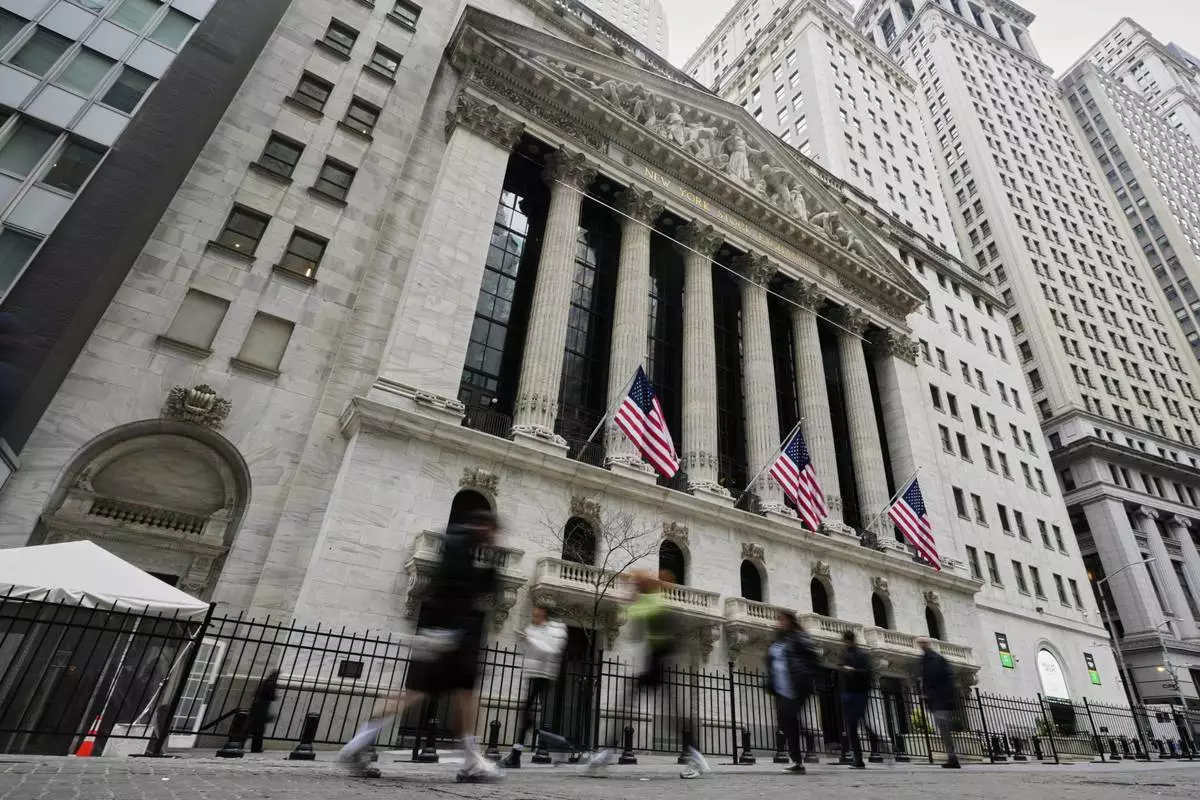
People walk by the New York Stock Exchange, Thursday morning, April 10, 2025. (AP Photo/Richard Drew)
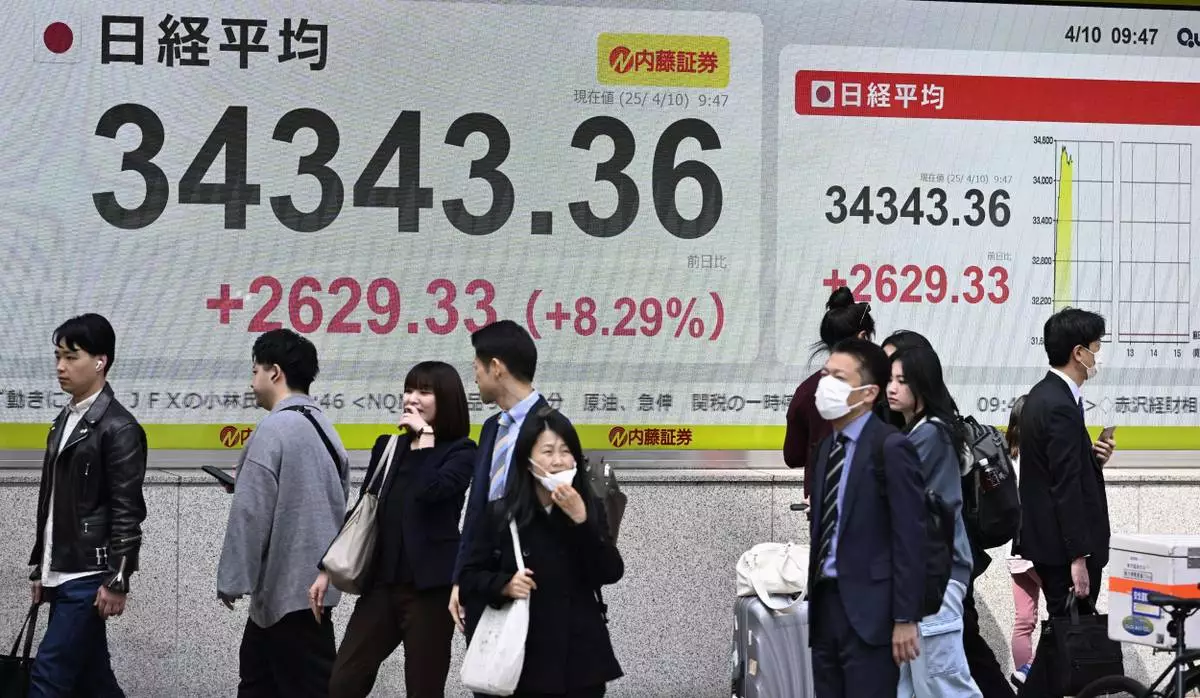
People walk by an electronic board showing Japan's Nikkei 225 index at a securities firm in Tokyo Thursday, April 10, 2025. (Kyodo News via AP)
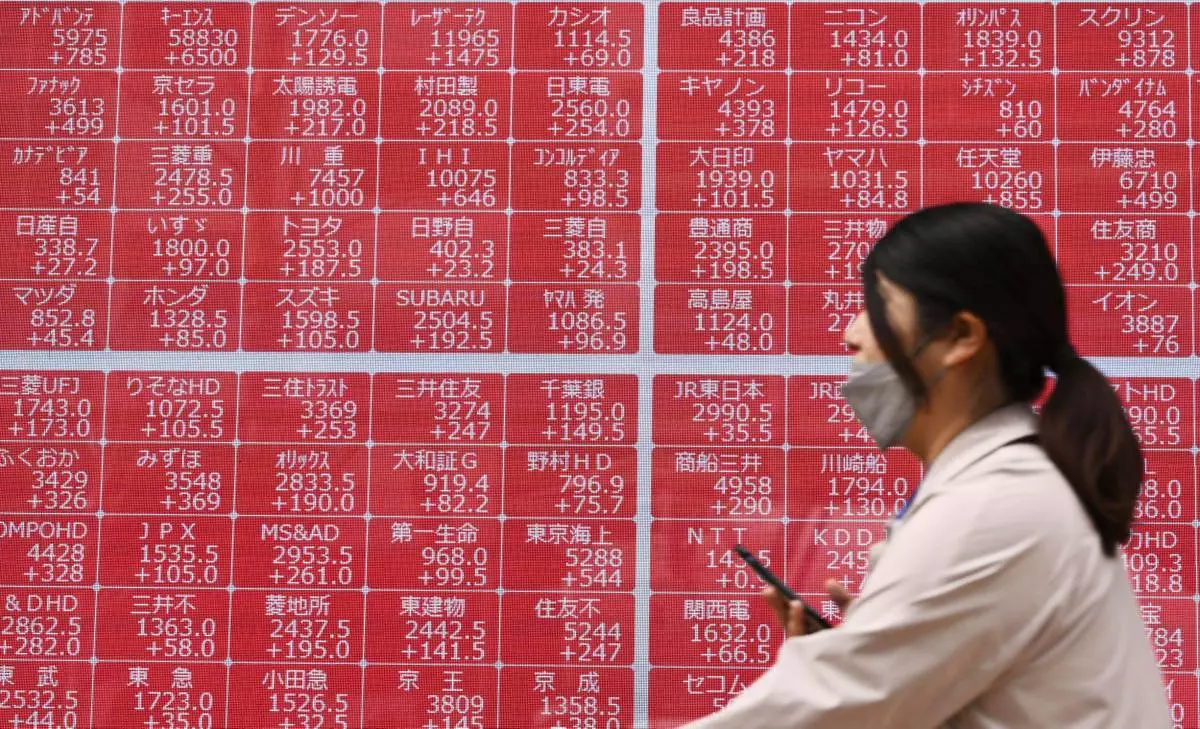
A person walks past an electronic stock board at a securities firm in Tokyo Thursday, April 10, 2025. (Kyodo News via AP)

A currency trader walks by the screens showing the Korea Composite Stock Price Index (KOSPI), left, and the foreign exchange rate between U.S. dollar and South Korean won at a foreign exchange dealing room in Seoul, South Korea, Thursday, April 10, 2025. (AP Photo/Lee Jin-man)

A currency trader watches computer monitors at a foreign exchange dealing room in Seoul, South Korea, Thursday, April 10, 2025. (AP Photo/Lee Jin-man)

A currency trader walks by the screens showing the Korea Composite Stock Price Index (KOSPI), left, the foreign exchange rate between U.S. dollar and South Korean won and the Korean Securities Dealers Automated Quotations (KOSDAQ) at a foreign exchange dealing room in Seoul, South Korea, Thursday, April 10, 2025. (AP Photo/Lee Jin-man)

A currency trader prepares to work near the screens showing the Korea Composite Stock Price Index (KOSPI) and the foreign exchange rate between U.S. dollar and South Korean won at a foreign exchange dealing room in Seoul, South Korea, Thursday, April 10, 2025. (AP Photo/Lee Jin-man)

A currency trader watches computer monitors near the screen showing the foreign exchange rate between U.S. dollar and South Korean won at a foreign exchange dealing room in Seoul, South Korea, Thursday, April 10, 2025. (AP Photo/Lee Jin-man)

President Donald Trump is displayed on a television on the floor at the New York Stock Exchange in New York, Wednesday, April 9, 2025. (AP Photo/Seth Wenig)
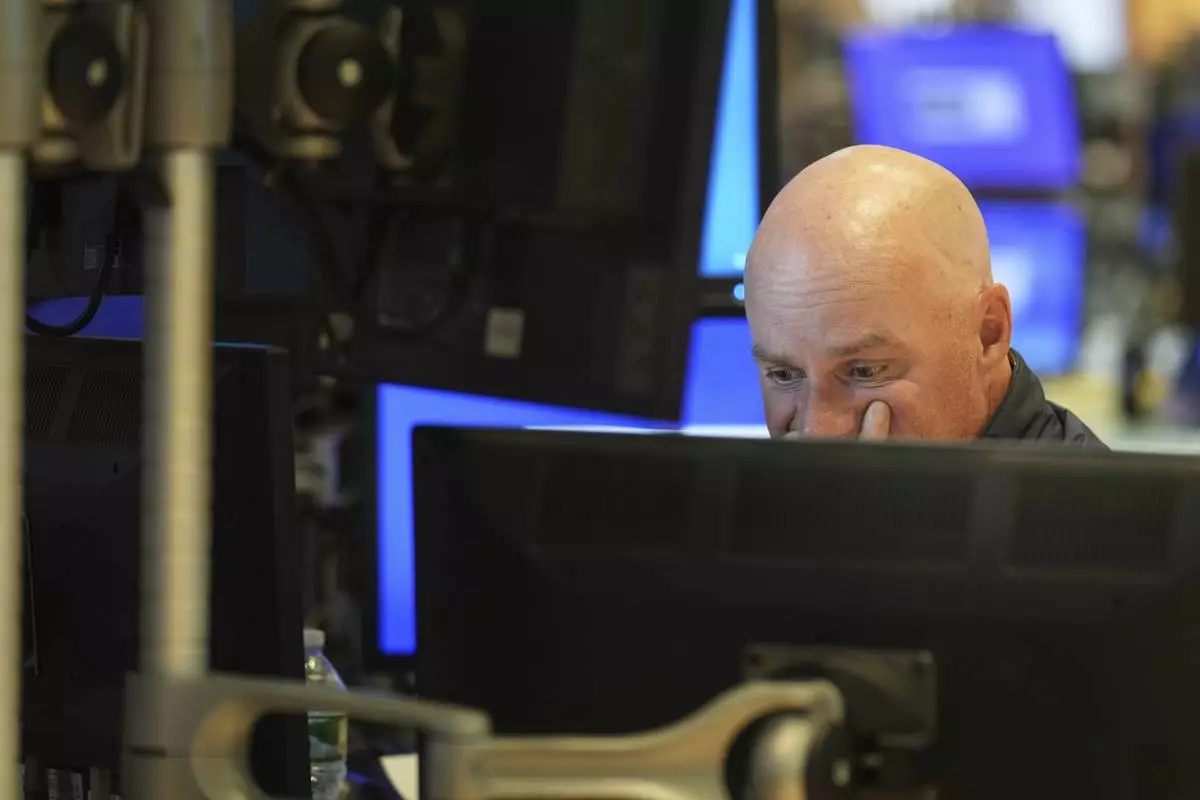
A traders works on the floor at the New York Stock Exchange in New York, Wednesday, April 9, 2025. (AP Photo/Seth Wenig)














